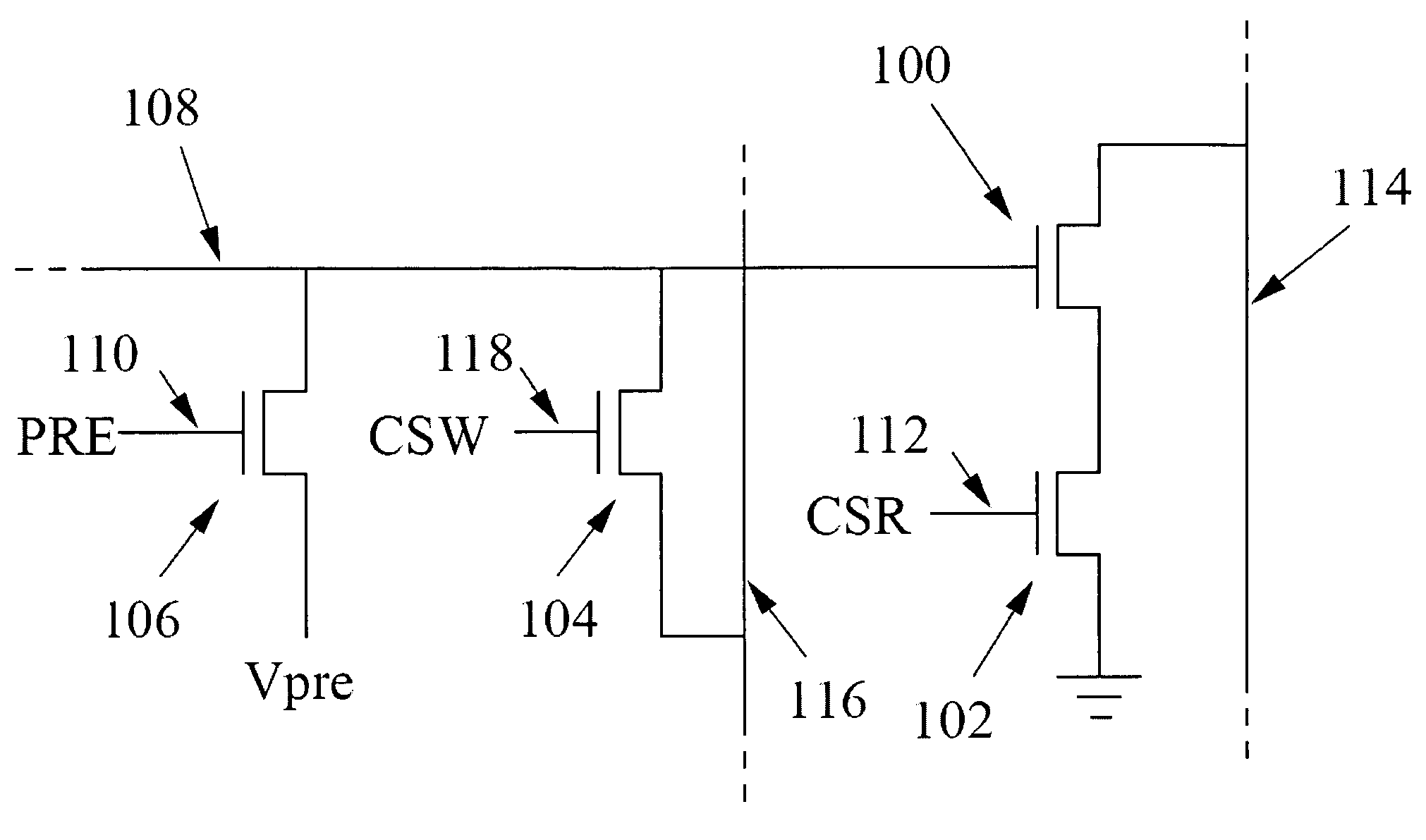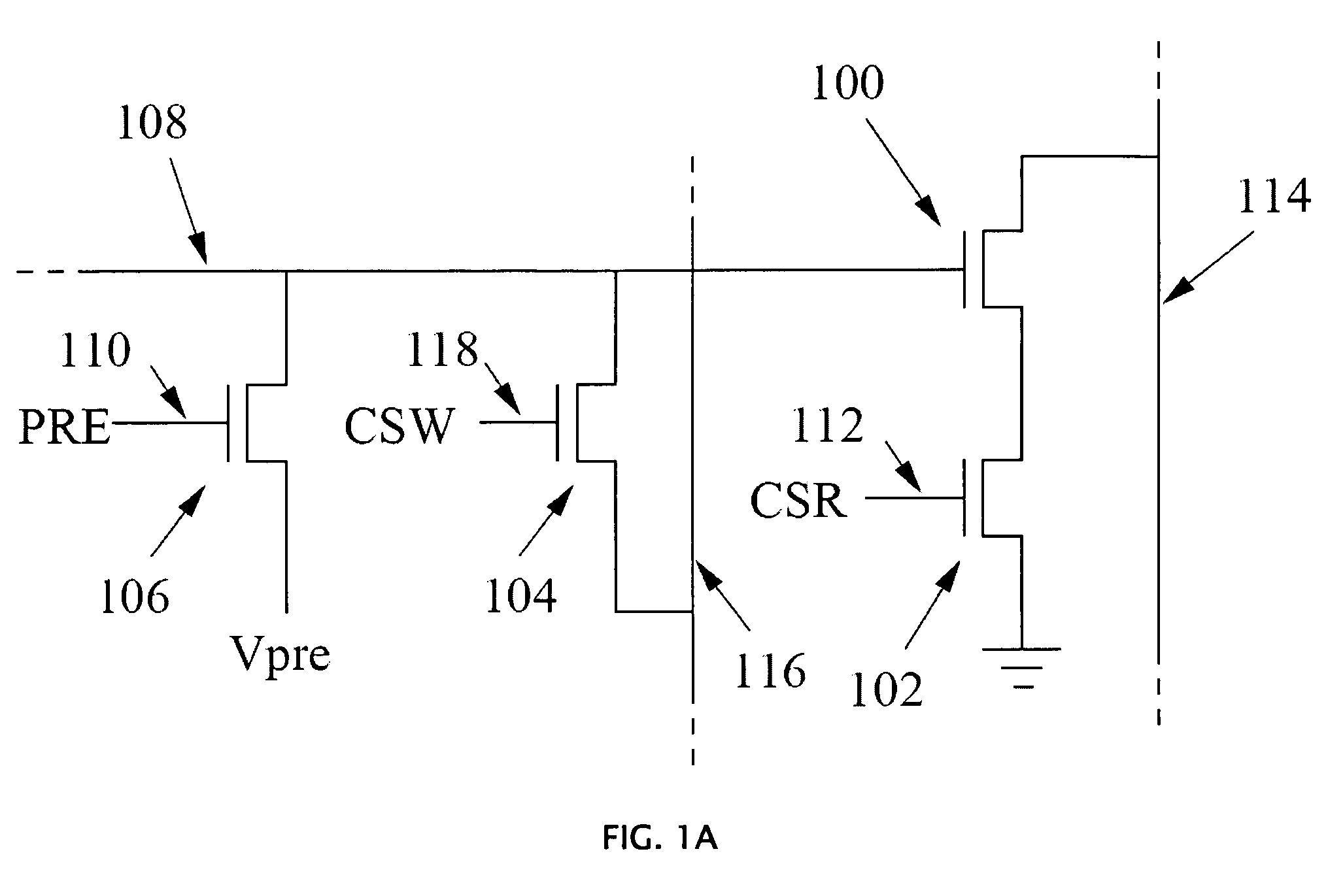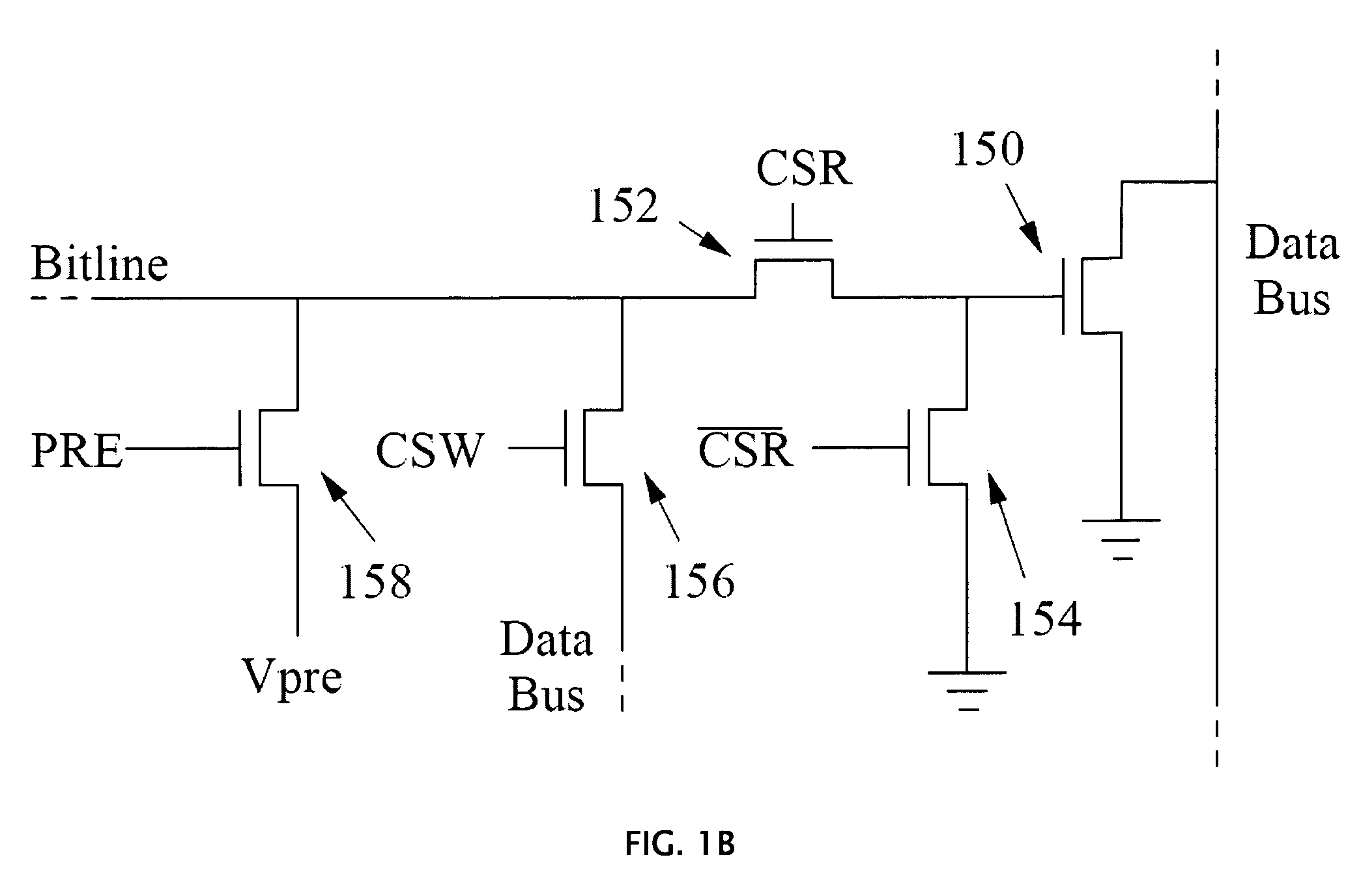Method and apparatus for a dynamic semiconductor memory with compact sense amplifier circuit
- Summary
- Abstract
- Description
- Claims
- Application Information
AI Technical Summary
Benefits of technology
Problems solved by technology
Method used
Image
Examples
Embodiment Construction
[0056]The present invention is a dynamic memory device that comprises a new architecture, circuitry, and method for data storage and retrieval. The device provides a higher-density memory compared with conventional DRAM. It is enabled by the use of very small, simple sense amplifiers, as well as an open bitline array organization. A number of novel techniques are presented for coping with reduced-complexity sense amplifiers, as well as for improving the economics of the memory. Such techniques include reducing bitline length, adding separate read and write select lines, using a two-pass write operation to reduce coupling noise, allowing for serial I / O, and employing a unique reference scheme.
General Operation
[0057]Within the memory array are typical dynamic storage cells that operate identically to the cells in DRAM. When a sub-row of data, which constitutes a single block unit of sequential data, is to be read from a sub-array, the sub-wordline corresponding to that sub-row is acti...
PUM
 Login to View More
Login to View More Abstract
Description
Claims
Application Information
 Login to View More
Login to View More - R&D
- Intellectual Property
- Life Sciences
- Materials
- Tech Scout
- Unparalleled Data Quality
- Higher Quality Content
- 60% Fewer Hallucinations
Browse by: Latest US Patents, China's latest patents, Technical Efficacy Thesaurus, Application Domain, Technology Topic, Popular Technical Reports.
© 2025 PatSnap. All rights reserved.Legal|Privacy policy|Modern Slavery Act Transparency Statement|Sitemap|About US| Contact US: help@patsnap.com



